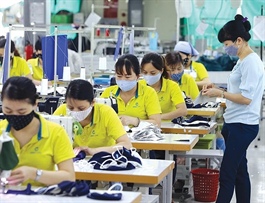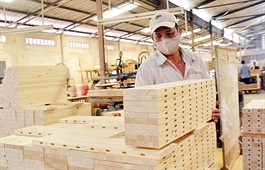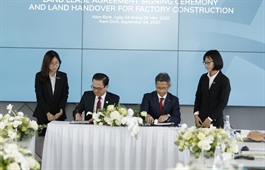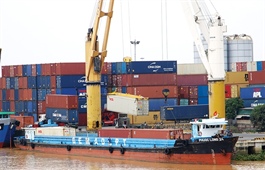Vietnam enjoys large trade surplus in August thanks to Samsung Note 20 exports
Vietnam enjoys large trade surplus in August thanks to Samsung Note 20 exports
The growth of Vietnam's export turnover in the past month is mainly driven by Samsung Complex’s new Note 20, according to Bao Viet Securities (BVSC).

Vietnam enjoyed large trade surplus in August thanks to Samsung Note 20 exports
|
Export turnover in August 2020 was estimated at $26.5 billion, up 6.5 per cent compared to the month prior (after adjustment), of which the domestic companies contributed $9.5 billion, up 4 per cent, while foreign-invested enterprises made up $17 billion, up 8 per cent. The growth of exports in the past month was mainly driven by Samsung Complex’s export of its new Note 20, according to Bao Viet Securities (BVSC).
Over the first eight months of the year, export turnover is estimated at $174 billion, up 1.6 per cent on-year, while import turnover was $162.2 billion, down 2.6 per cent. Since imports experienced a more significant decline than exports, Vietnam maintained a large trade surplus of $11.9 billion in the first eight months and $3.5 billion in August alone.
The US remains the largest export market with 19 per cent growth, followed by Chinese market with a 13 per cent increase. In the opposite direction, exports to the EU, ASEAN, Japan, and South Korea decreased by 4, 13.6, 6, and 1.5 per cent.
As of August, there were three groups of high-value industrial products achieving solid export growth, namely electronics, computers, and components ($27.6 billion, up 25 per cent); machinery, equipment, and spare parts ($15.1 billion, up 32 per cent); and wood and wooden products ($7.3 billion, up 9.6 per cent).
Meanwhile, exports of industrial manufacturing products either plunged or achieved a lower growth than the same period last year, including textile of $19.2 billion, down 11.6 per cent year-to-date and footwear of $11 billion, down 8.6 per cent.
Agricultural exports underwent a fall in most products compared to the same period last year, including vegetables (down 11 per cent), natural rubber (down 12.7 per cent), cashew nuts (down 5.4 per cent), and coffee (down 1.3 per cent), among others.
Rice exports, on the other hand, grew by 10.4 per cent thanks to high demand globally spurred by the ongoing COVID-19 crisis.
In terms of exchange rate, in August, central rate and actual exchange rate quoted at commercial banks moved in opposite directions. While the central rate decreased by VND13 (0.06 per cent), the actual rate at commercial banks increased slightly by VND9 (0.04 per cent). Thus, compared to the end of 2019, the central rate by the end of August increased by 0.2 per cent while the exchange rate at commercial banks was almost unchanged.
BVSC believed that the downtrend of the USD on the global market was the main reason for the decline of the USD/VND exchange rate in August, marking the second consecutive month that the USD declined in the global market. Compared to late 2019, the USD Index at the end of August dropped 4.3 per cent. Besides, Vietnam’s large trade surplus (of $11.9 billion in the first eight months of 2020) also helped maintain the USD supply.
The US Department of Treasury’s recent report of Vietnam’s large purchases of foreign currency in 2019 raised the risk that the US might name Vietnam as a currency manipulator. To prevent this risk, the State Bank of Vietnam (SBV) may suspend or limit foreign currency purchases in the short term. Therefore, if Vietnam's trade surplus stays high, the VND may appreciate slightly against the USD.
























